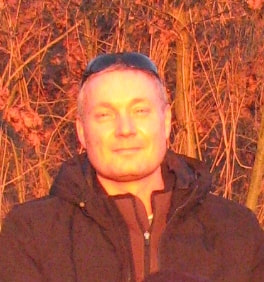The quote above comes from The Clear and Present Danger of Disinformation, a characteristically insufferable WEF panel discussion from last year citing misinformation and disinformation as the “biggest short-term global risk the world faces.”
As expected, the proclamation, repeated emphatically at Davos again this year, has sparked scoffing outrage among bloggers, independent media types, free speech defenders, and the like.
Though perfectly justified, the bulk of the sneering emanating from such circles amounts to little more than offering a different way to look at the situation without acknowledging that the core crisis, the clear and present danger, resides in the situation itself — that is, in how nearly all information pollutes the current state of human consciousness and how merely being informed only exacerbates this problem.
Before wading into the issue, it is worth considering what it means to be informed.
Inform stems from the Latin in (meaning into) and forma (meaning to form). Joined together, these become informare — to shape, fashion, give form to, describe. This eventually entered into Old French as enfourmer, which meant to instruct in some specific subject.
From the perspective of human consciousness, being informed involves receiving and internalizing external information in representational configurations, i.e., symbols, images, and language, and using these to augment or construct a sense of reality.
Form, from the Latin forma, is interesting because it communicates image, likeness, shape, appearance, outline, or pattern. One theory suggests forma may be from or cognate with the Greek morphe meaning form, beauty, outward appearance, and that it entered into Latin via Etruscan and the name Morpheus, who, according to Ovid’s Metamorphoses, is a son of Hypnos, the Greek god of sleep, who in turn, was the brother of Thanatos, the god of death.
According to Ovid, Morpheus populates dreams with human forms and his brothers Phobetor and Phantasus — two more of Hypnos’s thousand sons — are responsible for filling sleeping people’s heads with the forms of animals and inanimate objects, respectively.
Note that in all cases, the stuff of dreams is not internally self-generated, but enters externally, implanted by dream gods. Like language and symbols, the Greeks believed that even dreams came from the outside and were implanted, shaped, and formed by external divine forces rather than from within man himself.
But what existed before the advent of representational? In terms of human consciousness, Owen Barfield posits that early man existed in Original Participation, a state in which man was absorbed in and part of reality. Secondary thinking via symbols and language was all but absent or rudimentary. Though primary thinking dominated Original Participation, it emanated from a faint sense of self.
As we emerged from that form of consciousness, symbols, and language began to dominate, but that representational "world" was still infused with and supported by some semblance or vestige of primary thinking.
The use of symbols and language allowed man to participate in Reality differently. Secondary thinking separated man from Reality and granted the “space” needed for world discovery, self-discovery, and self-formation.
The alienation of modern man represents near-total submersion in the representational world, made all the more acute by the ever-increasing disconnect between Reality and representations of Reality.
This disconnection marks the virtual obliteration of primary thinking in favor of secondary thinking. Put another way, for modern man, secondary thinking via externally received symbolic information is reality because he is virtually incapable of connecting with reality in any other way.
Modern man now regards the symbols, language, and other representations used to shape, fashion, give form to, or describe as reality itself, both de facto (as in matter of fact) and de jure (as in legally and officially recognized).
Simply put, information used solely at the level of secondary thinking is now synonymous with reality. Whoever controls information at the secondary level of thinking also controls reality.
The fine folks at the WEF and the rest of what is often referred to as Clown World understand this explicitly, which helps explain why they seem so eager to eradicate any information challenging their web of symbols, images, and language, all of which aims solely at manipulation to shape thoughts, attitudes, and actions.
Like Morpheus and his brothers, Clown World aims to keep human consciousness dormant, implant shapes and forms into sleeping minds, and demand everyone accept these implanted shapes and forms as reality.
Those who oppose the totalitarian aims espoused by organizations like the WEF recognize the information manipulation and seek to counteract it with truthful information. Though far more noble in intent and motivation, the aim of disseminating such truth-seeking information misses the mark concerning the bigger picture of human consciousness and its relation to reality.
In short, the war we are in is fundamentally a spiritual war, not an information war.
Many recognize and understand the totalitarian push to control the narrative. They fail to discern that the core problem is the exclusive and obsessive focus on engaging with narrative through secondary thinking, thereby keeping consciousness firmly entrenched in representational reality as reality (or, in keeping consciousness locked in the Information Age and its related thinking).
Clown World is not simply striving to control information and secondary thinking; they want to ensure human consciousness remains trapped in a state of information overload and secondary thinking.
Though they claim otherwise, I suspect that at the deepest, most fundamental level, Clown World and the demonic forces it serves welcome information opposition to their secondary-level information manipulations because it keeps human consciousness firmly fixated on representations as reality rather than on Reality.
Thus, keeping people engaged in information wars not only helps to distract from the spiritual war but also helps to hinder the further development of human consciousness.
I am not implying that those waging the information war against Clown World are intentionally entrapping people at the secondary level of thinking. Unlike the WEF — which deliberately uses information to enslave people in secondary-level thinking via representations that are directly opposed to God and Creation — information warriors on the side of good share representations that often can and do act as intermediaries to Truth and Reality; however, many information warriors treat the intermediaries themselves as Truth and Reality, and this is where the problems set in.
The information warriors who utilize representational intermediaries or the people who engage with the intermediaries the warriors produce — be it in the form of writing, symbols, spoken language, art, video, etc. — contribute virtually nothing to the spiritual war or the development of consciousness if they go no further than the intermediaries in terms of thinking and knowing or, worse, regard the intermediaries as Reality.
Winning the spiritual war and connecting with Truth and Reality does not and cannot boil down to being informed, an essentially passive state in which one allows the external to shape, fashion, give shape to, and teach reality via representations presented and accepted as Reality.
Being informed in that manner keeps one asleep and the plaything of Morpheus and his dream-forming brothers. Informed people who regard representations as Reality are dreamers living in a dreamland.
I am not implying that the representational is dispensable.
On the contrary, it is vital, but only when we understand that it serves as a go-between and not a final destination. In this sense, the representations the good info warriors provide are far superior to the information promulgated by the likes of the WEF, which serves more as a go-nowhere rather than a go-between. Yet representations on the side of good can only do good if they are treated as intermediaries — that is, used to orient and/or connect to Reality.
That connection to Reality happens beyond the representational, in the realm of primary thinking — the realm of non-representational direct-knowing originating from and connecting to the primal self. Although representational, secondary thinking can inspire, motivate, and guide individuals toward primary thinking, it cannot substitute for primary thinking.
Berdyaev observed that “truth has two meanings: truth as knowledge of reality, and truth as reality itself.” In this sense, information via representations (language, symbols) is truth as knowledge of reality, while direct-knowing is truth about Reality itself.
Berdyaev offers another way to think about it, “I wish to know, not actuality, but the truth about actuality. And I may learn what this truth is, only because in me, the knowing subject, there is a source of truth and because I may communicate with this truth.”
Communicating with this source of truth goes well beyond the state of “being informed”, i.e., of knowing actuality. It requires locating an innate, internal source of truth that can connect with Reality directly, moving beyond the realm of representations.
Information is intended to serve as a bridge to Reality, not substitute Reality.
Information as reality is, at best, only partial reality. We see the bridge but do not understand what it is for or mistake it for something else. Like all bridges, information provides a means to get across from one side to another. Their purpose is distorted if they remain uncrossed or if the other side into which they extend is disbelieved or denied.
As Berdyaev notes, “Truth is not something given objectively, but rather a creative achievement. It is creative discovery, rather than the reflected knowledge of an object or of being. Truth ... is the creative transfiguration of reality.”
That creative transfiguration of reality occurs only in direct knowing, in utilizing secondary thinking to transcend secondary thinking and approach coherent metaphysical assumptions.
Barfield's Final Participation anticipates a state of human consciousness that is once again immersed in Reality, only this time with a fully formed and active awareness of self that stretches far beyond the realm of representation.
I don't think we are close to achieving that at any sustainable level now; however, I do believe we can experience direct knowing intermittently if we work at it, and that such experiences offer more for the spiritual war and divine providence than a thousand databases of information ever could.
Thus, winning the information war is not and should not be a primary concern. We will surely lose the spiritual war if we focus exclusively on the information war.
The war we need to win is on the other side of information. That is where we should be focusing and "fighting."

 RSS Feed
RSS Feed

